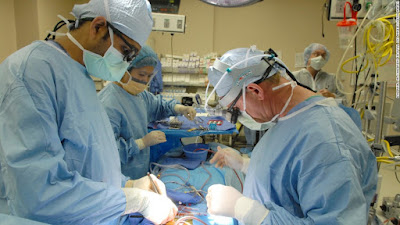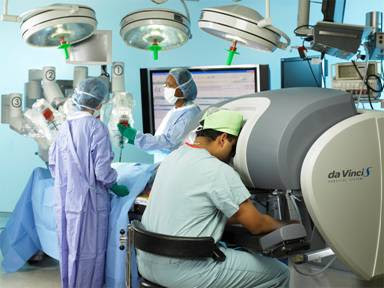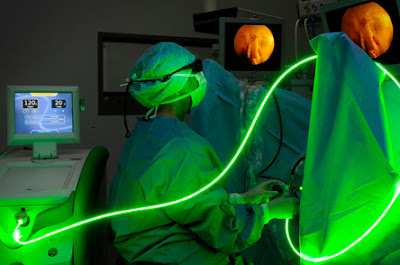Things You May Not Know about Robotic Surgery
Robot-assisted laparoscopic surgery is better than having a traditional open incision. The process has taken minimally-invasive surgery a step ahead. Most surgical procedures are being performed laparoscopically, these days. Tiny incisions pass a camera and small instruments through.
The Procedure
Conducted by the best robotic surgeons for prostate, this procedure will have the surgeon placing access ports in the surgical site that instruments and camera will pass through. Those instruments are attached to surgical robot.
The operating surgeon can have a console in the room with a magnified 3D view inside the patient. He also controls the camera and instruments using requite hand controls. The hand, wrist and finger movements of surgeon are translated to the instruments for completion of the procedure.
It is Safe
Although referred to as "robotic surgery," this procedure is not performed by a robot. The surgeon is in full control for the whole procedure. The robot will serve as an advanced surgical tool for translating hand movements of the surgeon into smaller, more precise movements of the operative tools. It will also allow enhanced visualization of the operative field.
All surgeries are prone to some risks. Robotic surgery is no different. However, in this case, robot-assisted surgery decreases most of the common risks.
The Benefits
The advantages are many and include smaller incisions and faster healing, shorter hospital stays (can often be an overnight stay depending on the procedure), less blood loss and lower rates of blood transfusion, more advanced surgical techniques and lower complication rates.
What is the procedure offered for?
Presently, robotic-assisted surgery is offered for all major procedures in the following:
- Urologic surgery
- Gynecological surgery
- General surgery (including colorectal and bariatric)
- Cardiothoracic surgery
- Several other specialties
When it comes to urology, robotic surgery is available for management of prostate cancer (prostatectomy). Other procedures include treatment of kidney cancer, kidney masses, obstructed or blocked kidneys and ureters (pyeloplasty and ureteroureterostmy), invasive bladder cancer (cystectomy), complex kidney stones (pyelolithotomy and ureterolithotomy) etc.
Robotic surgery is also offered for hernia repairs, bariatric or weight loss surgery, colon resections, removal of gallbladder (cholecystectomy) and a lot more.
The Procedure
Conducted by the best robotic surgeons for prostate, this procedure will have the surgeon placing access ports in the surgical site that instruments and camera will pass through. Those instruments are attached to surgical robot.
The operating surgeon can have a console in the room with a magnified 3D view inside the patient. He also controls the camera and instruments using requite hand controls. The hand, wrist and finger movements of surgeon are translated to the instruments for completion of the procedure.
It is Safe
Although referred to as "robotic surgery," this procedure is not performed by a robot. The surgeon is in full control for the whole procedure. The robot will serve as an advanced surgical tool for translating hand movements of the surgeon into smaller, more precise movements of the operative tools. It will also allow enhanced visualization of the operative field.
All surgeries are prone to some risks. Robotic surgery is no different. However, in this case, robot-assisted surgery decreases most of the common risks.
The Benefits
The advantages are many and include smaller incisions and faster healing, shorter hospital stays (can often be an overnight stay depending on the procedure), less blood loss and lower rates of blood transfusion, more advanced surgical techniques and lower complication rates.
What is the procedure offered for?
Presently, robotic-assisted surgery is offered for all major procedures in the following:
- Urologic surgery
- Gynecological surgery
- General surgery (including colorectal and bariatric)
- Cardiothoracic surgery
- Several other specialties
When it comes to urology, robotic surgery is available for management of prostate cancer (prostatectomy). Other procedures include treatment of kidney cancer, kidney masses, obstructed or blocked kidneys and ureters (pyeloplasty and ureteroureterostmy), invasive bladder cancer (cystectomy), complex kidney stones (pyelolithotomy and ureterolithotomy) etc.
Robotic surgery is also offered for hernia repairs, bariatric or weight loss surgery, colon resections, removal of gallbladder (cholecystectomy) and a lot more.




Comments
Post a Comment